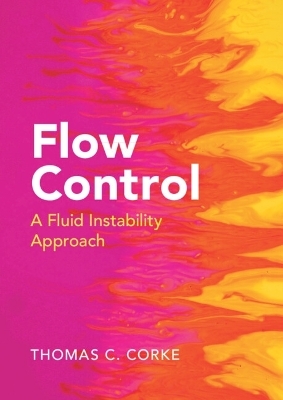
Flow Control
Cambridge University Press (Verlag)
978-1-108-83236-6 (ISBN)
This book provides a comprehensive treatment of passive and active flow control in fluid dynamics, with an emphasis on utilizing fluid instabilities for enhancing control performance. Examples are given from a wide range of technologically important flow fields occurring in aerospace applications, from low-subsonic to hypersonic Mach numbers. This essential book can be used for both research and teaching on the topics of fluid instabilities, fluid measurement and flow actuator techniques, and problem sets are provided at the end of each chapter to reinforce key concepts and further extend readers' understanding of the field. The solutions manual is available as a online resource for instructors. The text is well suited for both graduate students in fluid dynamics and for practising engineers in the aerodynamics design field.
Thomas C. Corke is the Clark Chair Professor of Engineering, founding Director of the Center for Flow Physics and Control (FlowPAC), and Director of the Hessert Laboratory for Aerospace Research at the University of Notre Dame. He is a Fellow of the American Institute of Aeronautics and Astronautics, the American Society of Mechanical Engineers, and The American Physical Society. He is the author of the books, Design of Aircraft (2003), and Wind Energy Design (2018).
1. Introduction; 2. Sensors and actuators; 3. Bluff body waves; 4. Separated flows; 5. Free shear layers and jets; 6. 2-D laminar boundary layers; 7. 3-D laminar boundary layers; 8. Turbulent boundary layers; 9. Shock-boundary-layer interaction; 10. Flow control by design.
| Erscheinungsdatum | 29.03.2024 |
|---|---|
| Zusatzinfo | Worked examples or Exercises |
| Verlagsort | Cambridge |
| Sprache | englisch |
| Maße | 175 x 250 mm |
| Gewicht | 1010 g |
| Themenwelt | Technik ► Maschinenbau |
| ISBN-10 | 1-108-83236-9 / 1108832369 |
| ISBN-13 | 978-1-108-83236-6 / 9781108832366 |
| Zustand | Neuware |
| Informationen gemäß Produktsicherheitsverordnung (GPSR) | |
| Haben Sie eine Frage zum Produkt? |
aus dem Bereich


